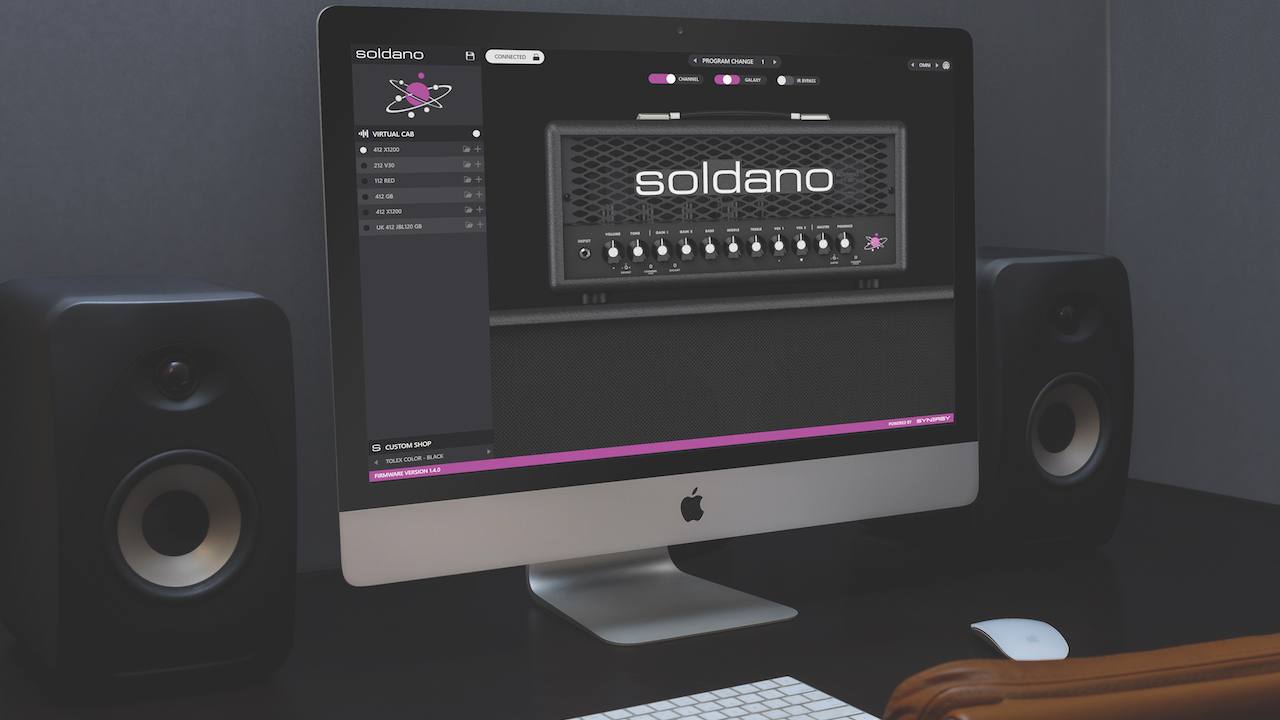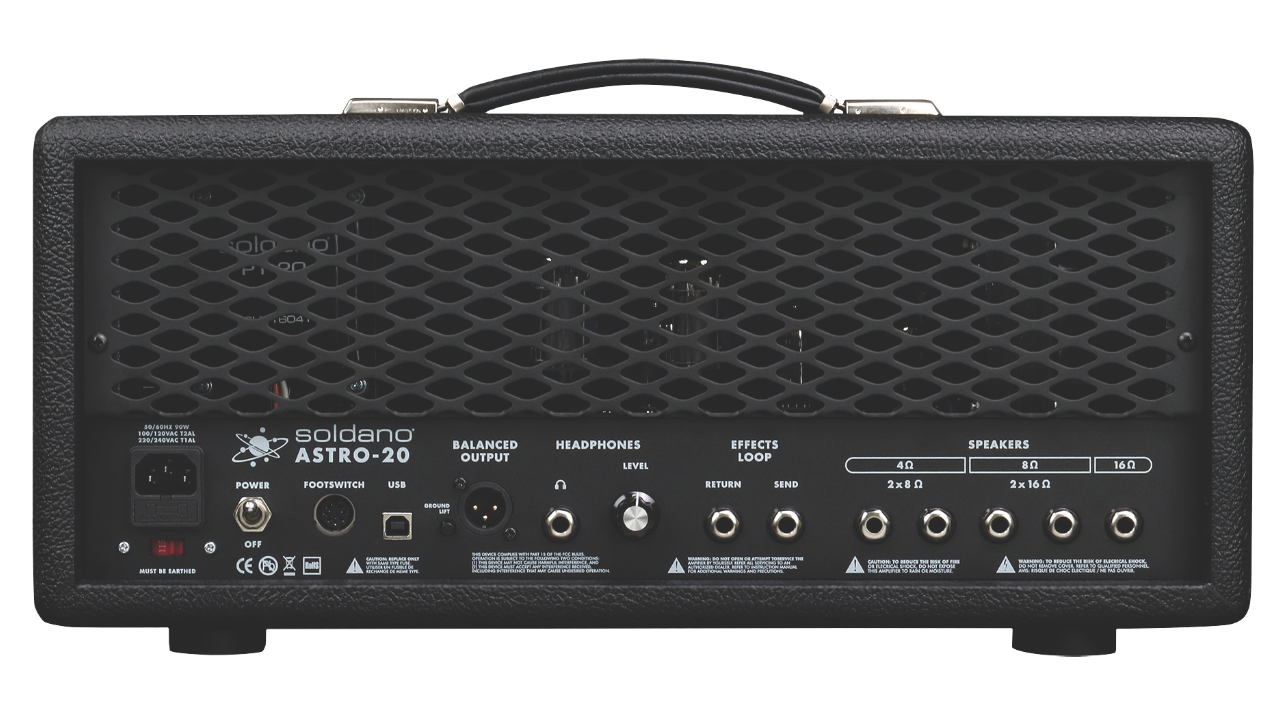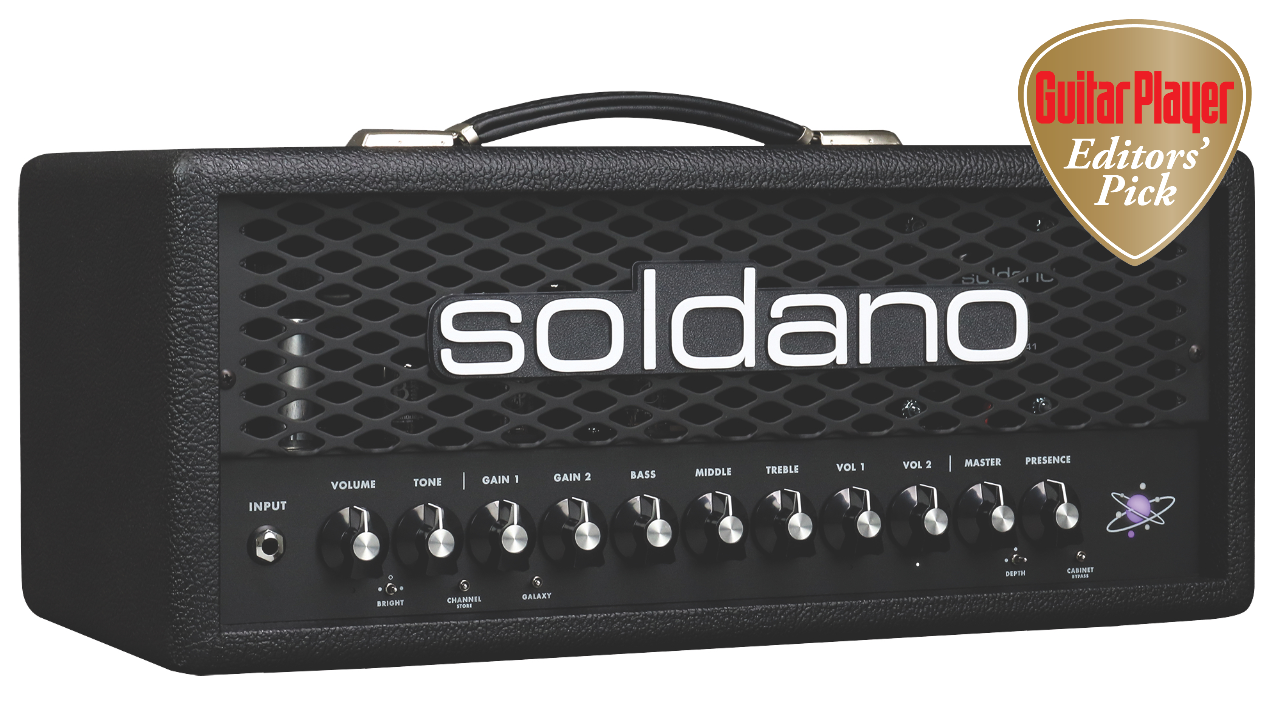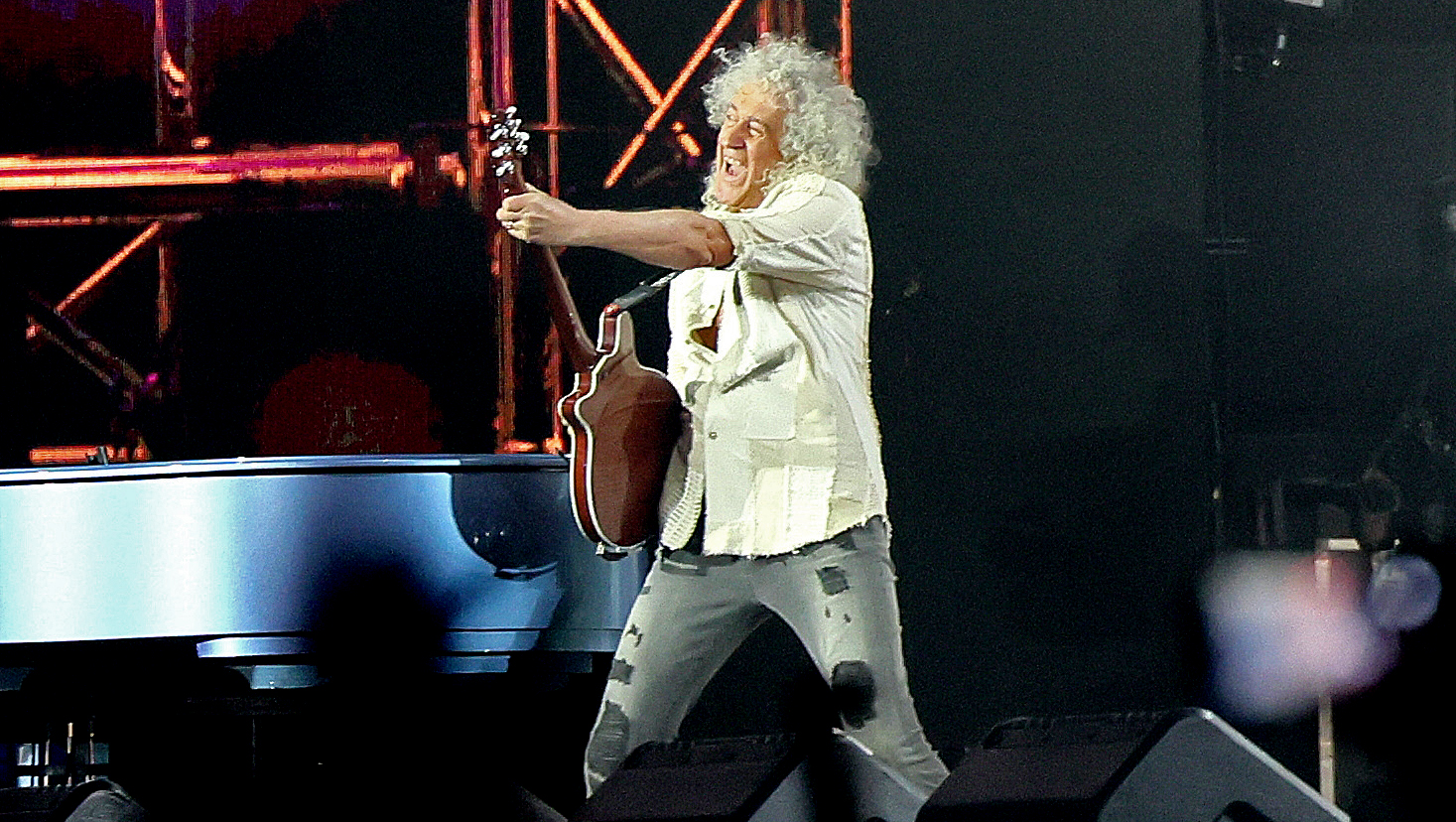GuitarPlayer Verdict
With plenty of power, future-proof MIDI-switching capabilities and IR loading features, this scorching old-school high-gain amp takes some beating. Includes a free download of Synergy’s Soldano Editor software too
Pros
- +
A great-sounding, lower-powered high-gain tube amp made extra versatile with onboard IRs for a wide range of live and
- +
studio demands
Cons
- -
The clean channel is a little sterile, and some form of gradations on the controls might be nice
You can trust Guitar Player.
The amp world issued a collective groan of mourning when Mike Soldano appeared to hang up his soldering iron in 2019. But the uptake of Soldano soon thereafter by Boutique Amps Distribution (BAD) — the California-based manufacturer of Friedman, Tone King, Morgan and Synergy amplifiers — promised a robust continuation of the legacy, bolstered by further design input from the high-gain master himself.
Having ramped up the line with the return of the legendary SLO-100 and lower-powered SLO-30 and Mini, Soldano now presents the Astro-20, an entirely new model built from three years of his own design work.
If the name tips it off as a successor to the popular club-sized flamethrower of the past, the Astroverb 16, it’s worth stating upfront that this is also an entirely new beastie, packing traditional Soldano lead voicing into a 20-watt head primed to fit today’s diverse performance and recording needs.
On its face, the Astro-20 is a traditional three-channel, all-tube head (also available as a combo) delivering 20 watts from a pair of 6V6GT output tubes, with four 12AX7s in the preamp and phase-inverter stages.
Scaffolded around that, however, are several features designed to help it meld seamlessly with the hybrid rigs that power so many players’ stage and studio needs in 2024. An internal cab load means it can be used without a speaker attached, tapping one of six internally stored impulse responses (IRs) to send hi-res speaker-cab tone to the XLR DI or stereo headphone jack.
The seven-pin DIN input can receive MIDI switching in place of the included four-button foot switch, loading up to 128 channels as well as Galaxy and cab presets (more on this below). There’s even a good old-fashioned effects loop!

In a first for this maker, the Astro-20 includes a free download of the Soldano Editor software, an easy-to-use interface by Synergy that allows uploading of third-party IRs and full MIDI preset and functionality programming.
As for the traditional tube-amp parameters, Soldano has parsed the Astro-20 as a three-channel amp with an independent clean channel plus two overdrive channels with independent gain and volume controls and shared three-band EQ.
Following the single input, the control set includes volume, tone, gain 1, gain 2, bass, middle, treble, vol 1, vol 2, master and presence. Channel 1 includes a three-position bright switch, and there are global switches for channel/store, Galaxy, depth and cabinet (IR).
Each of these little toggles expands the Astro-20’s versatility exponentially, but the Galaxy feature requires further explanation. It offers Blue, Purple and Red Galaxy gain voicings on the overdrive channel selected — mainly distinguished by ascending levels of saturation — and a Green Galaxy voicing on the clean channel.
If it all sounds like a potential mess of channel/IR/preset confusion in the making, the nifty Galaxy logo at the right end of the panel lights up in the proper color to show the Galaxy selected, and the six little planets illuminate to indicate the cabinet IR preset in use.
The quality of construction is indicative of what we’ve come to know from Soldano and the other BAD brands. Custom USA-made transformers join a sturdy printed circuit board, chassis-reinforced output tube sockets and other robust touches in an amp that should prove roadworthy for years to come.

It’s all given a none-more-black styling that declares its rock intentions, although I’d perhaps like to see numbers around the control knobs, or at least some sort of gradation.
I tested the Astro-20 with a Les Paul and a Telecaster via all the routes this flexible head enables, using the headphones, DI’d to a recording interface into Pro Tools and into an FRFR cab for “in the room” IR-based tones, and into a traditional 2x12 cab with Celestion G12M Creambacks and a 1x12 with Eminence DV-77.
No matter how you connect the back end, this little thing rocks! And no surprise there, given the Soldano pedigree.
It might be tricky to fully extrapolate the legendary SLO lead sound to a different amp with smaller 6V6 output tubes, but the Astro-20 does a great job of delivering three variations on that juicy, saturated sizzle. There’s gain, sustain and bite aplenty for just about any breed of lead playing, along with impressively pummeling crunch tones for power-chord rhythm work and tight low-string riffing.
The three Galaxies go from raw-edged rock and roll in Blue, to a more aggressive grind with guttural midrange bark in Purple, to serious shred-worthy sizzle in Red, and each can be further dialed in to taste with the respective gain control.
The clean channel, with the Green Galaxy, is very clean, but that’s what most players are seeking from channel one in any multi-channel head, and it does take overdrive pedals very well if you want to juice it up. I suspect many users will live in one of the two overdrive channels, though, which is certainly where I had the most fun.
Although it’s a three-channel amp, the programmable four-button foot switch makes four entirely different tones available by assigning, for example, different Galaxy settings to either of the overdrive channels.
The result renders quite a bit of variation even before you consider hooking up full MIDI implementation for a whopping 128 presets, which is where the easy-to-use Soldano Editor software comes in. Once it was installed on my Mac, I was loading my own IRs and linking those, plus channel and Galaxy selections, to my presets in no time.
Having first tested the Astro-20 via headphones to explore the IR options, I was floored by how much volume this modest 20-watter put out when connected to a live guitar cab. The individual overdrive channel volumes and global master still enable hot lead tones at relatively low decibel levels, but when you need it, this head has more than enough firepower to keep up with a heavyfisted drummer.
As with his X99 preamp, Mike Soldano has embraced technology with the Astro-20’s MIDI-switching capabilities and IR loading features, and I think any fully featured tube amp maximizes its chances of surviving the digital age by doing likewise.
In addition to the IRs’ utility for recording and silent-stage/in-ear-monitor performances, one of the great bonuses is that you can carry a lightweight 1x12 for onstage monitoring while ramming a stout 4x12 tone through the front-of-house PA thanks to the onboard IRs. Win-win!
For all of these capabilities, as well as its solid foundation as a scorching old-school high-gain amp suited to modern playing situations, the Astro-20 earns an Editors’ Pick Award.
Specifications
- CHANNELS 3
- CONTROLS Volume, tone, gain 1, gain 2, bass, middle, treble, vol 1, vol 2, master, presence; Ch 1 bright switch, global switches for channel/store, Galaxy, depth, cabinet (IR)
- POWER 20 watts
- TUBES Four 12AX7 preamp tubes, two 6V6 output tubes
- EXTRAS Four-button foot switch/MIDI input, USB port, stereo headphones jack and level control, effects loop send and return, five speaker outs for 4Ω to 16Ω
- WEIGHT 26 lbs
- DIMENSIONS 19” x 9.5” x 8” (WxDxH)
- BUILT USA
For more information, visit soldano.com
Dave Hunter is a writer and consulting editor for Guitar Player magazine. His prolific output as author includes Fender 75 Years, The Guitar Amp Handbook, The British Amp Invasion, Ultimate Star Guitars, Guitar Effects Pedals, The Guitar Pickup Handbook, The Fender Telecaster and several other titles. Hunter is a former editor of The Guitar Magazine (UK), and a contributor to Vintage Guitar, Premier Guitar, The Connoisseur and other publications. A contributing essayist to the United States Library of Congress National Recording Preservation Board’s Permanent Archive, he lives in Kittery, ME, with his wife and their two children and fronts the bands A Different Engine and The Stereo Field.
A gigantic $360 off Positive Grid's celebrated BIAS amp sim software may have just put the nail in the coffin of my beloved valve combo
"Let’s take acoustic-electric amplification to its ultimate realization." How to make an acoustic amp shimmer like a vintage Fender, smolder like a Dumble or scream like a Marshall












